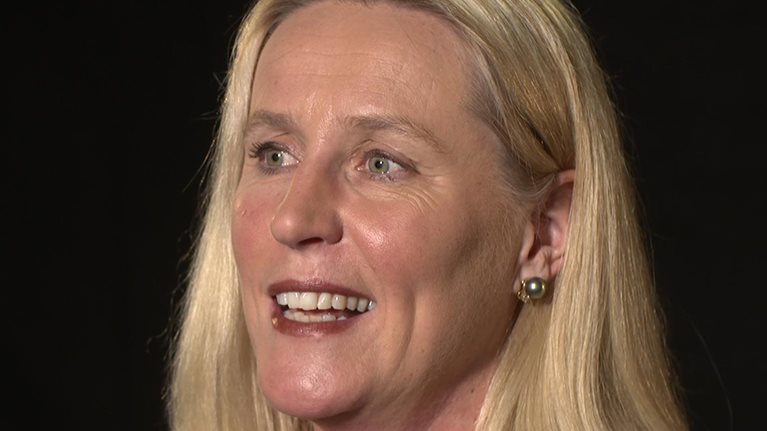Globally, women generate 37 percent of global GDP despite accounting for 50 percent of the global working-age population.
The global average contribution to GDP masks large variations among regions. The share of regional GDP output generated by women is only 17 percent in India, 18 percent in the Middle East and North Africa, 24 percent in South Asia (excluding India), and 38 percent in Western Europe. In North America and Oceania, China, and Eastern Europe and Central Asia, the share is 40 to 41 percent.
For the past ten years, McKinsey has been researching to build the case for greater parity in the economy and in corporations’ top management, and to understand the levers to make change happen. Through the Women Matter and Women in the Workplace series, as well as the McKinsey Global Institute’s reports, we have developed a global and regional understanding of the situation, built a clear economic case for change (at both the macro and micro levels), and identified common barriers and change drivers across the world, as well as specific issues or gaps to fix in some regions.
Ten years after our first report, while there is momentum in some parts of the world—namely Europe, North America and some places in Asia and Latin America—women are still underrepresented in the economy and in companies’ top management.
This anniversary publication provides an updated, fact-based picture of the representation of women in the top management of corporations around the world and brings together the key lessons from our work in gender parity over the past ten years. It includes the latest facts and insights from our studies in regions, in order to reinforce the case for change. And it offers an overview of the persistent barriers, as well as critical levers needed to make change happen, such as ways to enable women’s participation, engage men, and build strong pipelines of women leaders.
We also asked a number of leading thinkers from the business, government, academic, and social arenas to provide their perspectives on the various dimensions of the issue. The contributors:
- Bola Adesola, managing director and CEO, Standard Chartered Bank Nigeria
- Iris Bohnet, author and professor, John F. Kennedy School of Government at Harvard University
- Thomas Buberl, CEO, AXA
- Barbara Dalibard, CEO, SITA
- Angel Gurría, secretary-general, Organisation for Economic Co-operation and Development
- Shobana Kamineni, executive vice chairperson, Apollo Hospitals; president, Confederation of Indian Industry
- Gail Kelly, former CEO, Westpac
- Isabelle Kocher, CEO, ENGIE
- Janina Kugel, chief human resources officer and managing board member, Siemens
- Christine Lagarde, managing director, International Monetary Fund
- Michel Landel, CEO, Sodexo
- Ilian Mihov, Dean, INSEAD
- Takeshi Niinami, president, CEO, board member, and representative director, Suntory Holdings Limited
- Lubna Qassim, senior executive vice president and chief group general counsel, Emirates NBD
- Justin Trudeau, prime minister, Canada
- Margarita Zavala, presidential contender and lawyer, Mexico

Reinventing the workplace for greater gender diversity
Their contributions underline the importance of fixing gender imbalances for our societies and economies, as well as the societal and economic opportunities and benefits the world has to gain from gender parity. These testimonials bring conviction and fascinating visions to inspire our actions across the board, in order to build truly inclusive organizations for the future.
The report concludes by inviting everyone to dare to imagine what a truly inclusive company would look like in the future. We have synthesized the perspectives of our 16 contributors by highlighting the ten attributes of an inclusive organization:
- Unorthodox. Policies, rules, norms, and practices are constantly challenged to take into account the needs of all, not just one dominant group.
- Polymorphic. Diverse leadership styles are used, recognizing that effectiveness comes in many forms.
- Empowered. Instead of “command and control,” everyone is empowered and has the ability to shape the future.
- Multifaceted. The organization mirrors the society we live in—multicultural and reflecting a broad range of religions, cultures, and ethnicities.
- Meritocratic and fair. Processes are fair and everyone is treated equally, in settings free of bias.
- Caring and safe. The environment is no-fear, nonhierarchical, and nonviolent.
- Respectful. Women are considered peers; everyone has the same share of voice and can be heard by all.
- Balanced. The organization enables work-life balance, which means no more long hours and an understanding that performance is not linked to physical presence and time commitment.
- Global and agile. There is full connectivity, at a global scale, and flexibility—leveraging technology.
- Inventive. A forward-thinking CEO is surrounded by bold and creative millennials.
Download Women Matter: Time to accelerate—Ten years of insights into gender diversity, the full report on which this article is based (PDF–16MB).
Women Matter Research
For even more Women Matter research browse the full series:
2019: Taking the lead for inclusion
2014: Promoting gender diversity in the Gulf
2013: Gender diversity in top management
2012: Women Matter: Making the breakthrough
2011: Unlocking the full potential of women at work
2010: Women at the top of corporations
2009: Woman leaders in and after the crisis
2007: Gender diversity, a corporate performance driver

